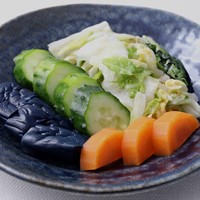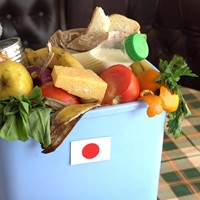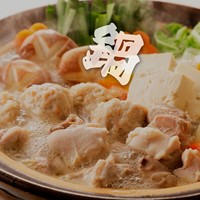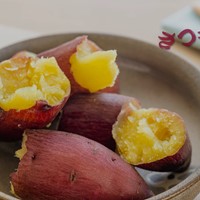Osechi Ryori: What to Know about Japan’s New Year's Food
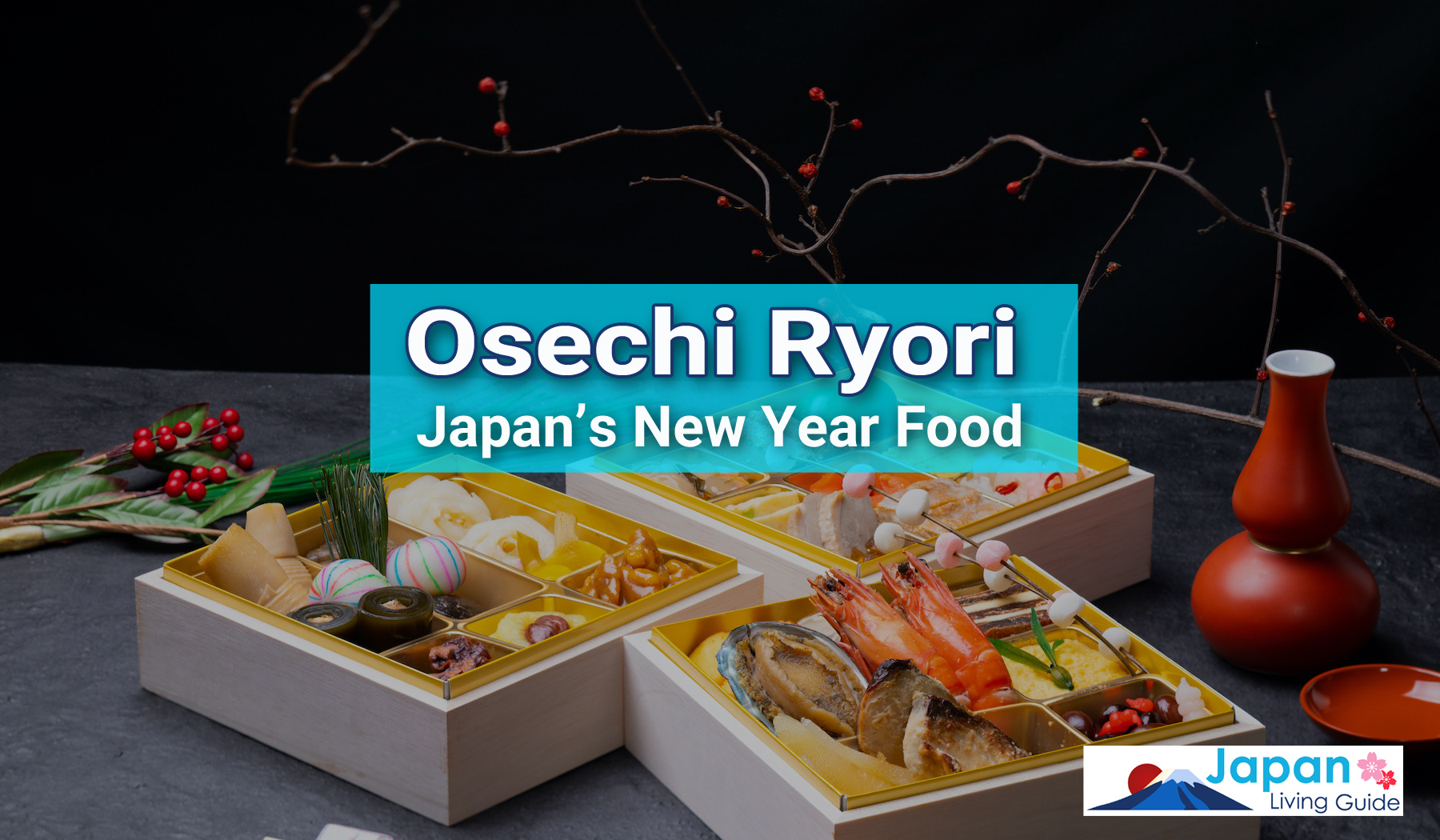
This page contains affiliate links.
New Year’s in Japan is a time of tradition, symbolism, and fortune. There are many rituals that take place around this time, a lot of which represent bringing good fortune into the new year and leaving behind bad luck. One of the biggest New Year’s traditions in Japan is osechi ryori, or the traditional foods of New Year. Keep reading to find out what the most common osechi foods are and why each has a distinct place in Japan’s holiday tradition.
What is Osechi Ryori?
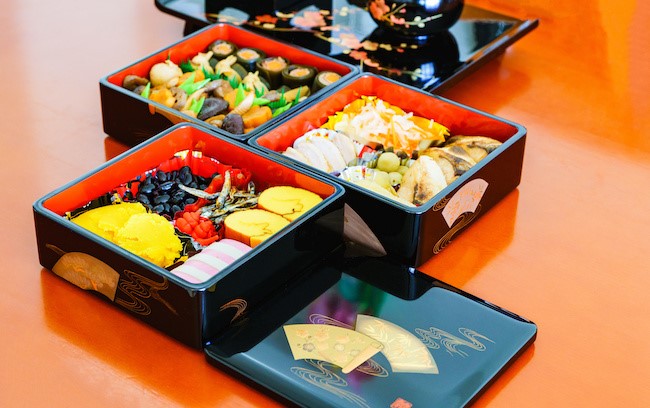
Osechi ryori is a set of around five stacked lacquerware boxes (jubako) of carefully packed food cooked just before New Year’s Day and eaten over the first few days of the new year. Traditionally, these are homemade food, although they can be bought from any supermarket, department store, and even convenience store nowadays. But how did this tradition come to be in Japan and why are the dishes still prepared today? Let’s look into the history of osechi ryori.
There is some debate about when osechi ryori first began, largely because it is hard to decide what dishes are exactly considered osechi. One theory dates it to the Yayoi period (300 BCE – 300 CE), when food was prepared as part of a harvest festival and provided as an offering to the gods.
As Japan was influenced by Chinese customs, the Chinese Cold Food Festival led to Japanese traditions of also avoiding cooking for the first few days of the new year to prevent offending the gods of the “holy fire.” Osechi ryori started to be cooked in advance and stacked on the table to eat over these few days.
In the Edo period, these dishes became more elaborate and had a wider variety of food included. The meanings of the different osechi foods were cemented and the custom was enjoyed by all levels of society.
Popular Osechi Foods and Their Meanings
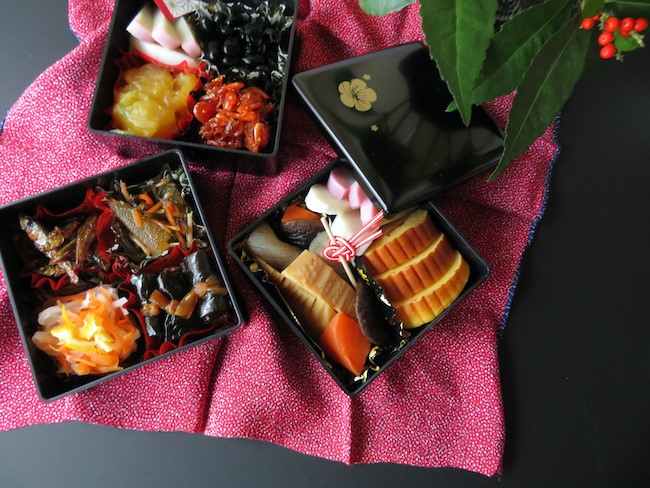
It is important to recognize that not every osechi jubako will include every osechi food. There are many possible combinations, but budget restraints, personal preferences, and time availability (if home-cooked) can lead to smaller or more varied osechi choices.
Some jubako will include more traditional items, while others will create a modern take. There are also differences depending on the size of the food and the boxes. While all the below foods are common, don’t be surprised if you get osechi ryori with something else included. The following are some of the most common foods to be included and the meanings behind them.
Jubako (Stacked Boxes)
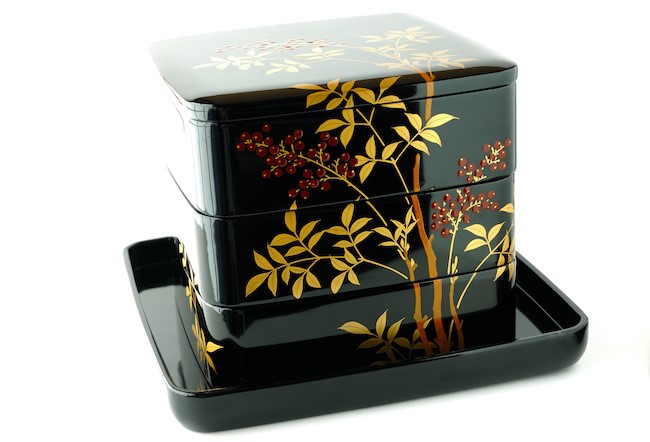
Firstly, before we get into the food, there is even a meaning behind the stacked jubako boxes, which are thought to be equivalent to stacked congratulations, or multiple congratulation-worthy events for the coming year.
Kuromame (Black Beans)
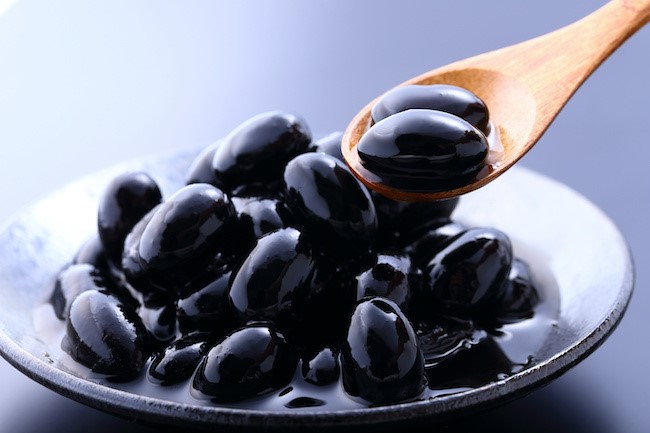
Black is considered a color that protects against evil in Japanese beliefs. “Mame,” the word for bean, is also a homonym for the Japanese word for diligence, or vigor, giving kuromame the meaning of continued strength and hard work for the coming year.
Kazunoko (Herring Roe)
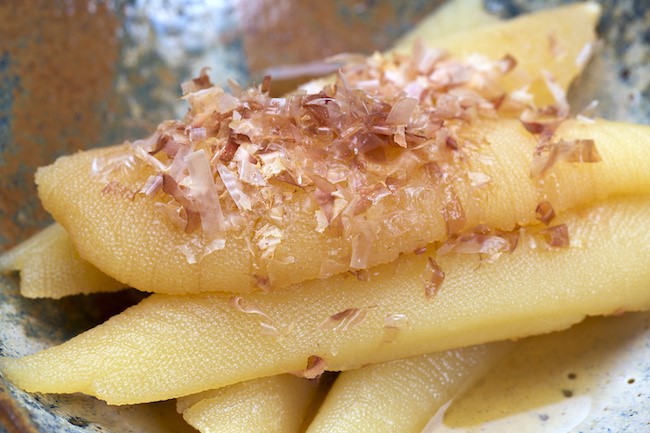
Kazunoko are strips of crunchy herring roe marinated in dashi. This carries the meaning of wishing for a large family with many children. “kazu,” or number, and “ko,” or child, has the quite literal meaning of having many children.
Boiled Shrimp
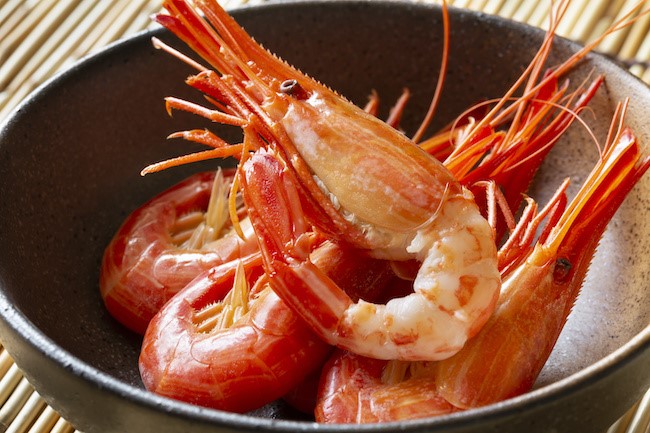
The inclusion of shrimp is based on the shape of the shrimp. The bent back and long antenna bring to mind the image of an old man bent over and represent a long life and the wish for longevity.
Burdock Root
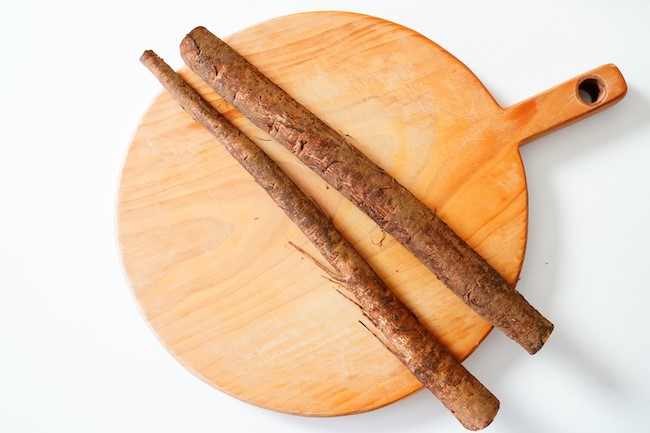
Burdock root is a commonly eaten vegetable in Japan. It is a plant whose roots grow deep and directly down, often making it difficult to harvest. Eating this plant symbolizes both physical strength and strong family ties. Burdock root is also considered a healthy food in traditional medicine for removing “bad blood.” It is usually cooked until soft, pounded to loosen the fibers, and dressed with a sesame sauce.
Kurikinton (Mashed Sweet Chestnuts)
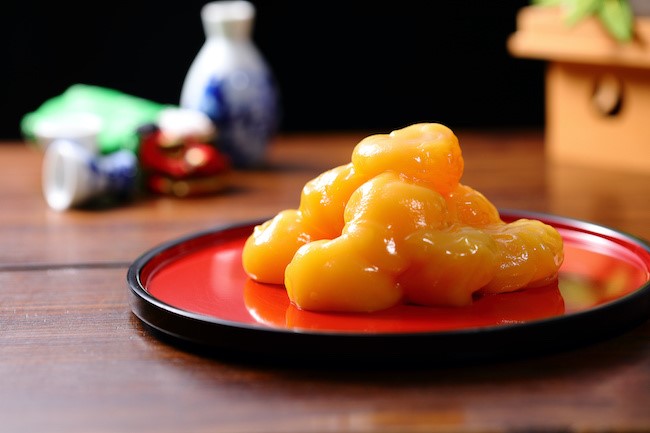
Chestnuts are already considered a lucky food in Japan due to the name for dried chestnuts (kachiguri) having the same sound as the word for success or triumph. Kinton is a type of sweet dumpling, and when cooked with chestnut becomes a yellow color. This is supposed to symbolize wealth and success in business. These sweet dumplings can be sticky to eat but are popular among children or as a sweet treat in the osechi offerings.
Kombu (Kelp)
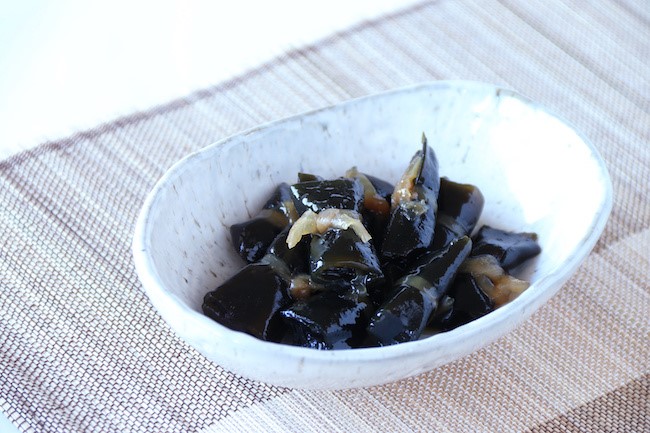
Kombu is a popular edible seaweed in Japan, among the many other seaweed varieties. In osechi, it is often served as a maki roll. The word kombu is sometimes pronounced “kobu,” which shares a sound with yorokobu, meaning happiness or rejoice. Therefore, it is meant to bring happiness into the new year. There is some debate over the meaning as the word can be written a different way in Japanese, meaning childbirth, and potentially symbolizing fertility.
Kohaku Namasu (Pickled Carrot and Radish)
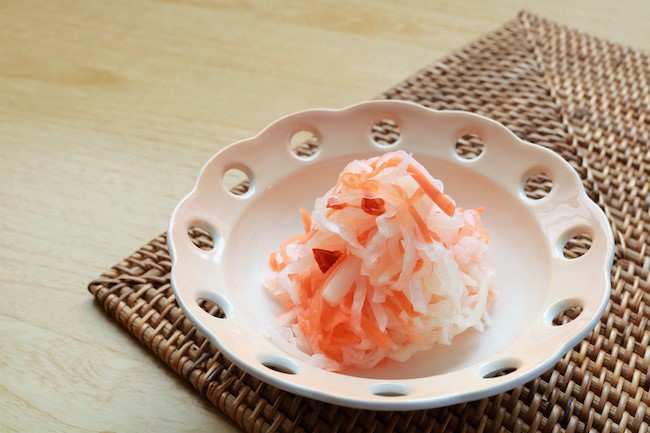
Kohaku namasu is a pickled salad made from strips of carrot and radish, giving the appearance of red and white stripes, which is the symbol of celebration and festivities. Pickled vegetables are a very common side dish in Japan, so it is no surprise that a version of this is part of the regular osechi offering.
Datemaki (Rolled Omelette)
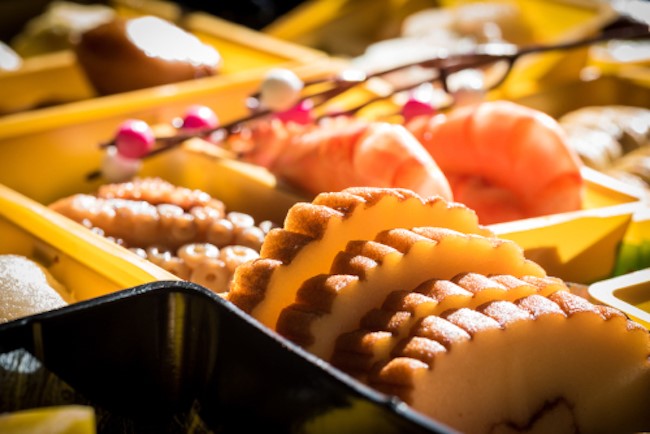
While you may have seen rolled omelettes, or tamagoyaki before, datemaki is different as it includes fish paste or shrimp paste and is often seasoned with sushi vinegar, completely changing the flavor. It is cut into slices and the roll shape is said to resemble a scholar’s scroll. This means the datemake is supposed to symbolize learning and wisdom. For those with children in the household, it symbolizes success at school.
Order Osechi Online
You can easily order Osechi online on Amazon Japan.
Experience Japanese Culture Through the Food You Eat
If you have spent any time in Japan around Christmas and New Year’s Day, you will have seen the bright boxes of neatly packed osechi ryori ready for families to take home. Trying osechi cuisine is an excellent way to introduce yourself to the winter traditions of Japan. But for even more opportunities, be sure to visit our comprehensive guides on Japanese culture and food. There you will learn more about the many offerings of Japan and how you can try them for yourself.
In Japan, there are various New Year traditions such as sending "nengajo," putting up traditional decorations. and performing "hatsumode."

